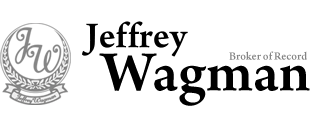Foreigners are already heavily invested in Canada's housing market, whether they're landlords or not
2/27/2017
| SHARE
Posted in Foreign Buyers by Vanguard Realty | Back to Main Blog Page

One puzzle around the run-up in Canadian home prices is the extent to which foreign money is the driver. The idea is that rich people from places like China are buying up homes as an investment with no intention of ever living in Canada, pushing up the cost of housing for every one else.
Facing complaints about a lack of data, governments are racing to gather more information about just how much non-Canadian cash is fuelling meteoric gains in Vancouver and Toronto real estate.
But they needn’t look far. Just ask the banks.
The nation’s lenders have more than doubled their external debt since the end of the recession — an amount in excess of $500 billion, according to international investment position data released by Statistics Canada.
That’s brought total external debt financing of Canadian banks to about $850 billion through last September, and it’s easy to conclude that at least some of the new foreign debt has helped drive mortgage lending. In some cases, the linkage with residential mortgages is direct.
Foreigners are already invested in the nation’s housing market through the intermediation of banks, whether they’re landlords or not.
External Debt Rescue
Speaking of external debt, one benefit (among many) of the recent rebound in commodity prices is that Canada’s growing reliance on external financing should start to abate — and not a moment too soon.
Statistics Canada is likely to report Wednesday the country’s current account deficit — what it borrows from the rest of the world to finance its spending — narrowed considerably in the last three months of 2016 on the back of higher receipts from oil exports. That may represent a break from an almost two-year run of record foreign borrowing, which if continued would become a major economic vulnerability.
Here are the numbers:
A fourth-quarter deficit would be Canada’s 33rd-straight quarterly current account gap, an accumulative $463 billion over that time or about 3.2 per cent of GDP. The country’s last surplus was in the third quarter of 2008. The deficits were particularly bad over the past year and a half as oil prices fell, reaching records — one of the worst external-account performances among advanced economies. Canada’s external debt has doubled since the recession to $2.3 trillion. That’s greater than the size of the country’s economy, and compares with less than 60 per cent of GDP 10 years ago.
In addition, an increasing amount of the debt seems to be short-term and denominated in foreign currencies — which makes the country more vulnerable to the vagaries of global money. What would happen, let’s say, if there is a sudden increase in the value of the U.S. dollar.
The flip side to these numbers is that foreigners have been more than happy to finance Canada’s spending — a sign of confidence in the country’s economy.
“It’s a situation where it’s not a problem until it is a problem,” said Doug Porter, chief economist at Bank of Montreal. “I would say that in the last couple of years we’ve been flirting with a problem.”
Week Ahead
Rate Decision
The Bank of Canada’s interest rate statement on Wednesday isn’t expected to produce any change in monetary policy, either in rates or nuance. Swaps traders are pricing in a 99.4 per cent probability that rates will stay at the central bank’s 0.5 per cent benchmark rate.
As for the contents of the statement, there hasn’t been enough clarity on trade issues from President Donald Trump’s administration to reduce the uncertainties that Governor Stephen Poloz flagged at the last announcement in January.
One thing to watch: in the last two statements, the Bank of Canada has sought to contrast a U.S. economy close to capacity, with a Canadian economy that has a lot more slack. The implication is that investors should be wary about pricing in a recovery in Canada to the same extent.
Another change in the last two statements has been the disappearance of long-standing language around the balance of risks.
In a September rate decision, the Bank of Canada said those risks had tilted to the downside, prompting investors to increase bets on a rate cut. Then those risks became balanced again in an October statement, even after the central bank revised down its economic outlook. In the December rate decision, the language was removed altogether.
Apropos of Nothing
There’s been another change in the Bank of Canada’s rate statements over the past six months or so: they’re taking longer to make a point. The average sentence length of the last five statements has increased to 20.3 words, versus 18.1 words in the preceding 24 statements.
Source: Bloomberg.com
Canada Real Estate, Canadian Housing Market, Foreign Buyers, Foreign Investors

Thinking of buying or selling a property, or have a question regarding the real estate market? Fill out the form below and we'll get back to you promptly.
